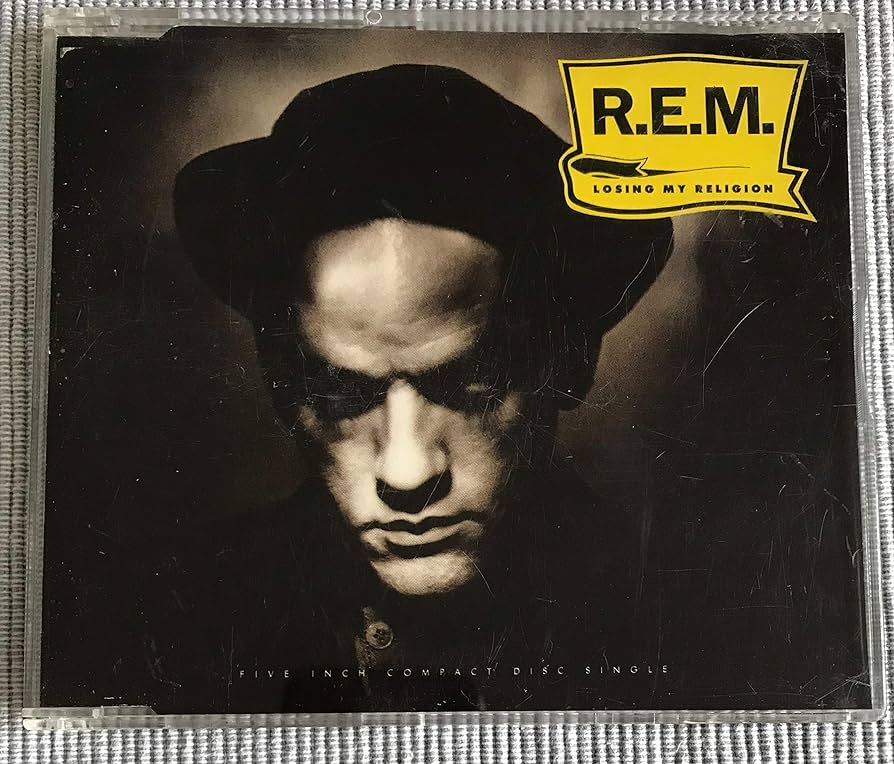R.E.M.’s “Losing My Religion” is not just a song; it’s a journey—an exploration of faith, doubt, and the complexities of human emotion. Released in 1991 as the lead single from their album “Out of Time,” the song captivated audiences with its haunting melody, introspective lyrics, and enigmatic imagery, cementing its status as one of the defining tracks of the alternative rock genre.
At its core, “Losing My Religion” is a meditation on the struggle between belief and doubt—a soul-searching quest for meaning and identity in a world filled with uncertainty. The song’s title, derived from a Southern expression meaning to lose one’s temper or composure, serves as a metaphor for the loss of faith and the unraveling of deeply-held convictions. Lead singer Michael Stipe’s cryptic lyrics further reinforce this theme, weaving together images of obsession, longing, and existential angst to create a tapestry of introspection and introspection.
Musically, “Losing My Religion” is a masterclass in restraint and nuance. Built around a hypnotic mandolin riff played by multi-instrumentalist Peter Buck, the song’s sparse instrumentation creates a sense of intimacy and vulnerability, allowing Stipe’s distinctive vocals to take center stage. His emotive delivery, marked by its whispered urgency and raw vulnerability, draws listeners in, inviting them to share in his inner turmoil and existential questioning.
But perhaps what truly sets “Losing My Religion” apart is its universal appeal and cultural impact. Despite its deeply personal themes, the song resonates with audiences of all ages and backgrounds, tapping into the shared human experience of doubt, fear, and longing for connection. Its haunting melody and evocative lyrics have made it a staple of radio playlists, film soundtracks, and television commercials, ensuring its place in the collective consciousness for generations to come.
Moreover, “Losing My Religion” has inspired countless interpretations and analyses, with listeners and critics alike grappling with its elusive meaning and enigmatic imagery. Some see it as a meditation on the loss of religious faith, while others interpret it as a metaphor for the loss of innocence or the dissolution of a romantic relationship. Still, others view it as a commentary on the pressures of fame and the struggle to maintain authenticity in a world driven by image and perception.
The song’s accompanying music video, directed by Tarsem Singh, further enhances its impact, featuring surreal imagery and striking visuals that mirror the song’s themes of obsession and disillusionment. Stipe’s mesmerizing performance, set against a backdrop of religious iconography and dreamlike landscapes, adds another layer of depth and complexity to the song’s meaning, inviting viewers to delve deeper into its mysteries.
In the end, “Losing My Religion” is more than just a song—it’s a journey of self-discovery, a testament to the power of music to provoke thought, stir emotions, and challenge assumptions. Whether experienced as a personal confession or a universal lament, its message of doubt, longing, and existential searching remains as relevant and resonant today as it was upon its release over three decades ago. So the next time you find yourself grappling with life’s uncertainties or questioning your beliefs, just remember the words of R.E.M.: “That’s me in the corner. That’s me in the spotlight, losing my religion.”
